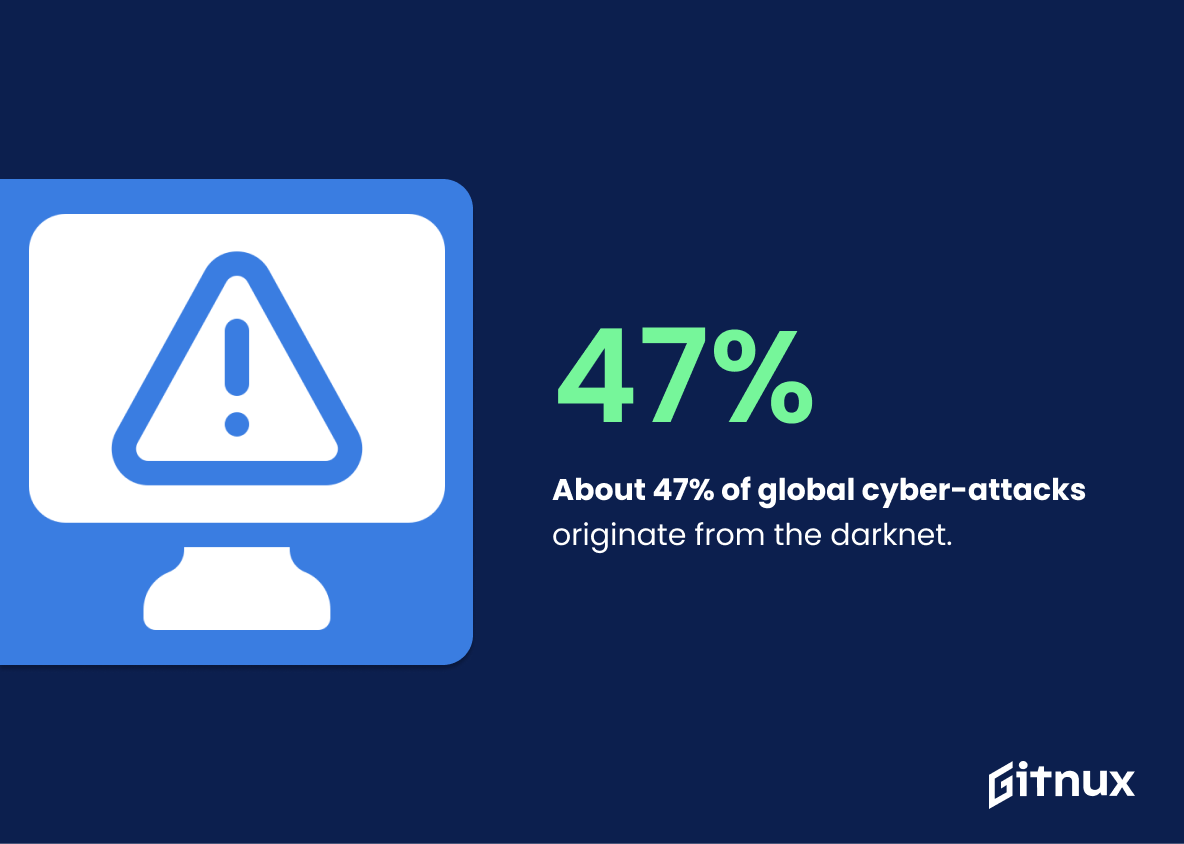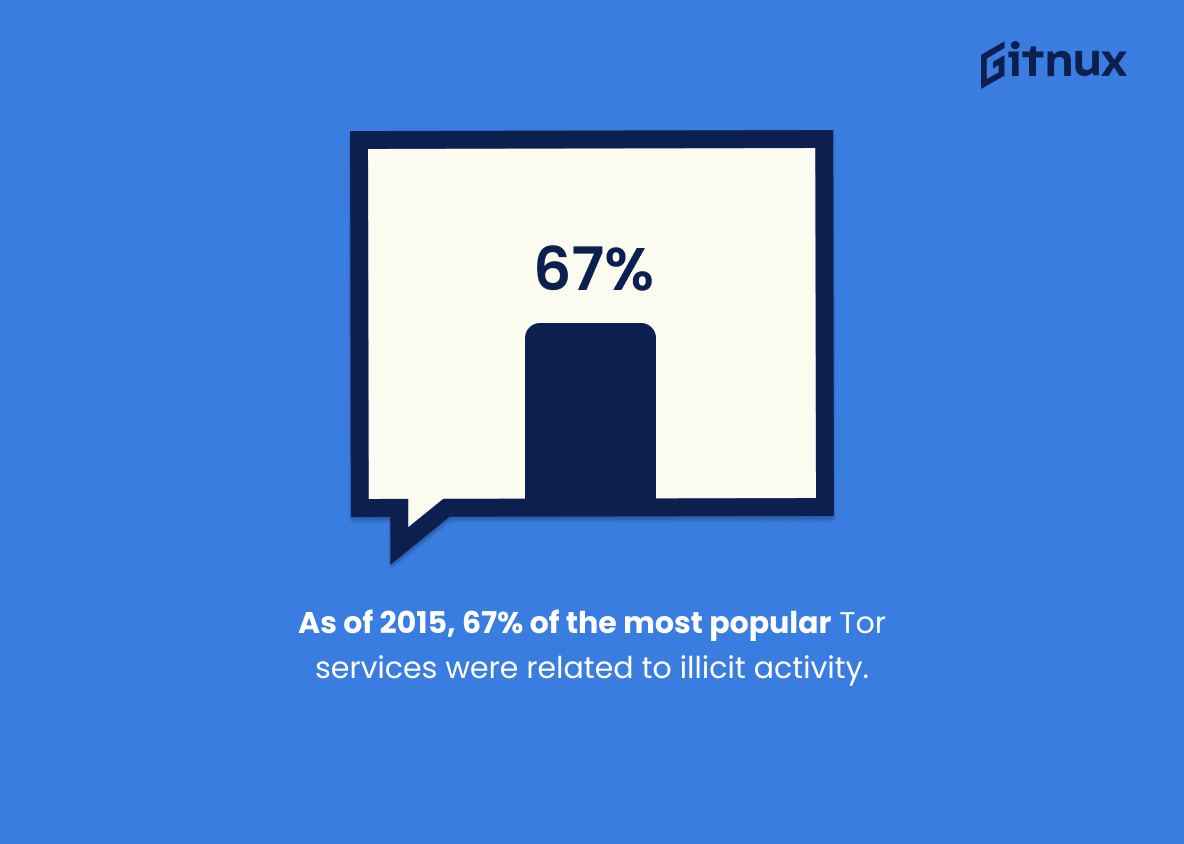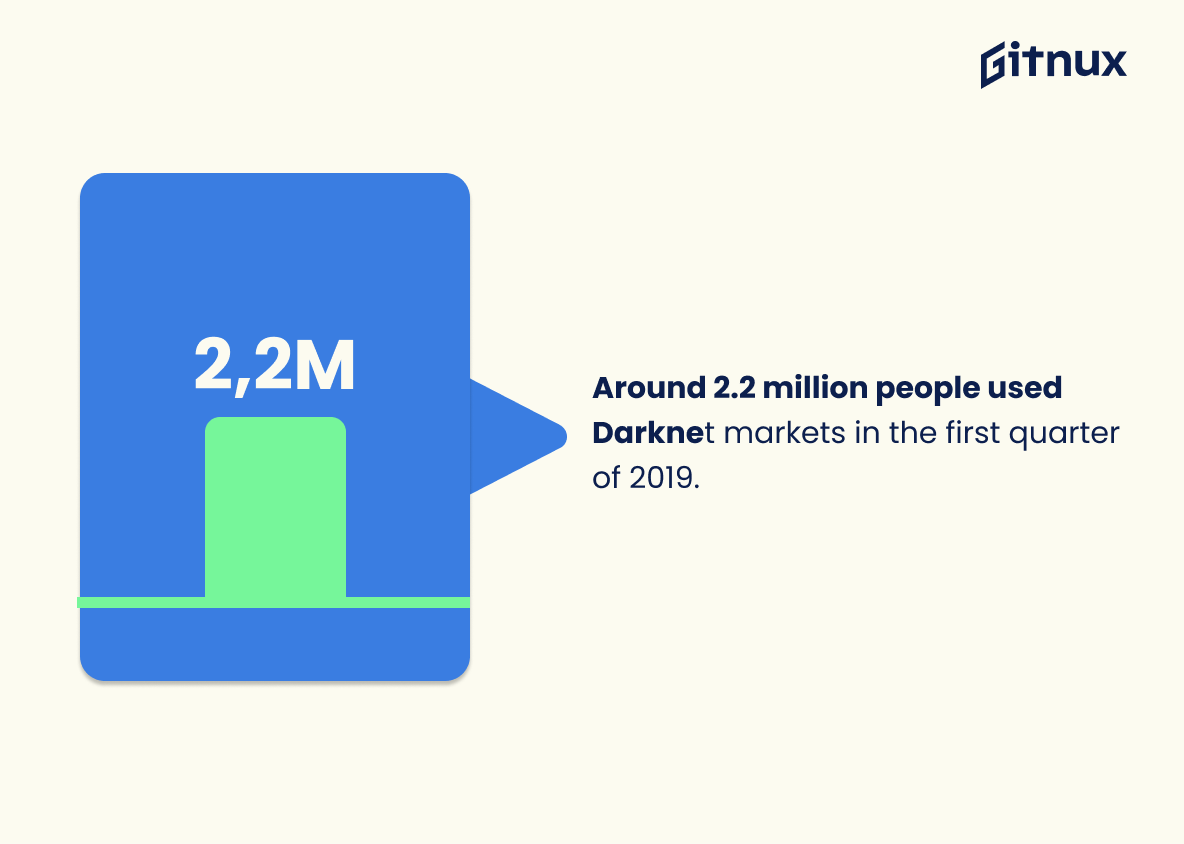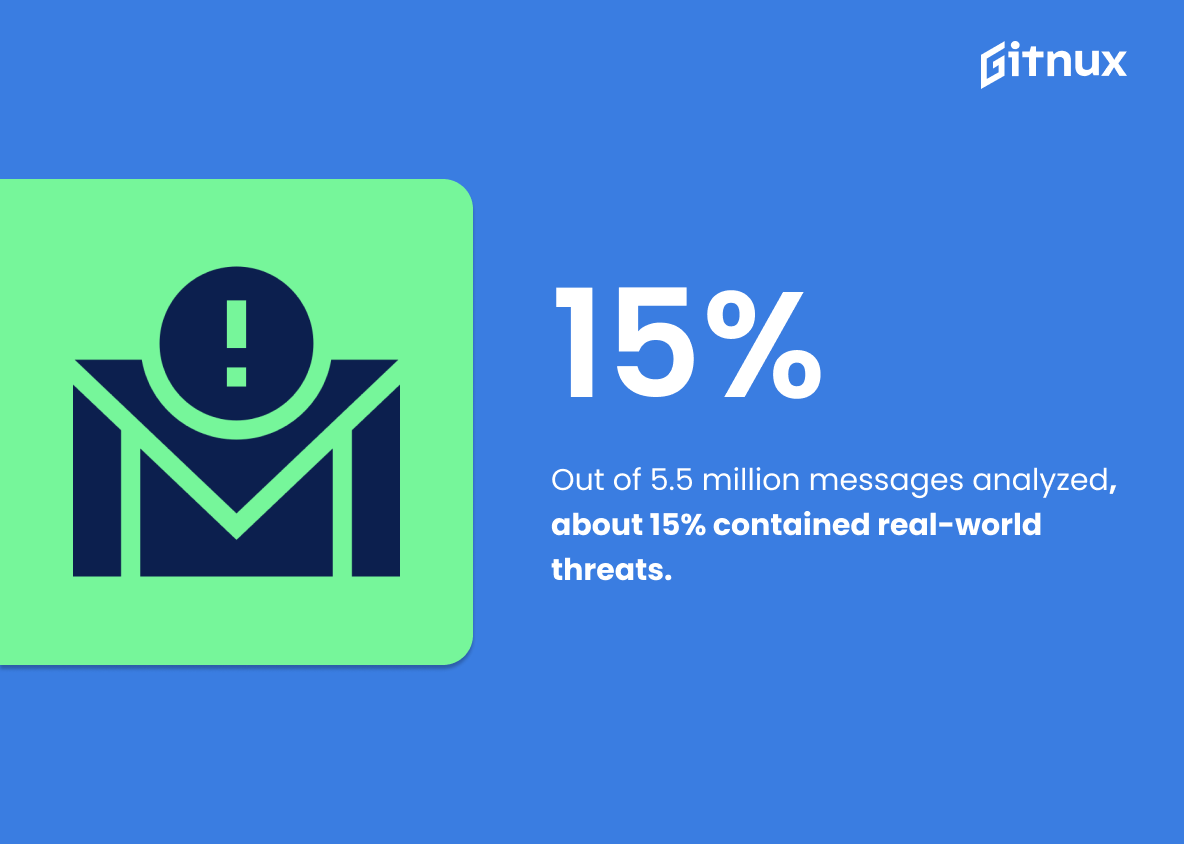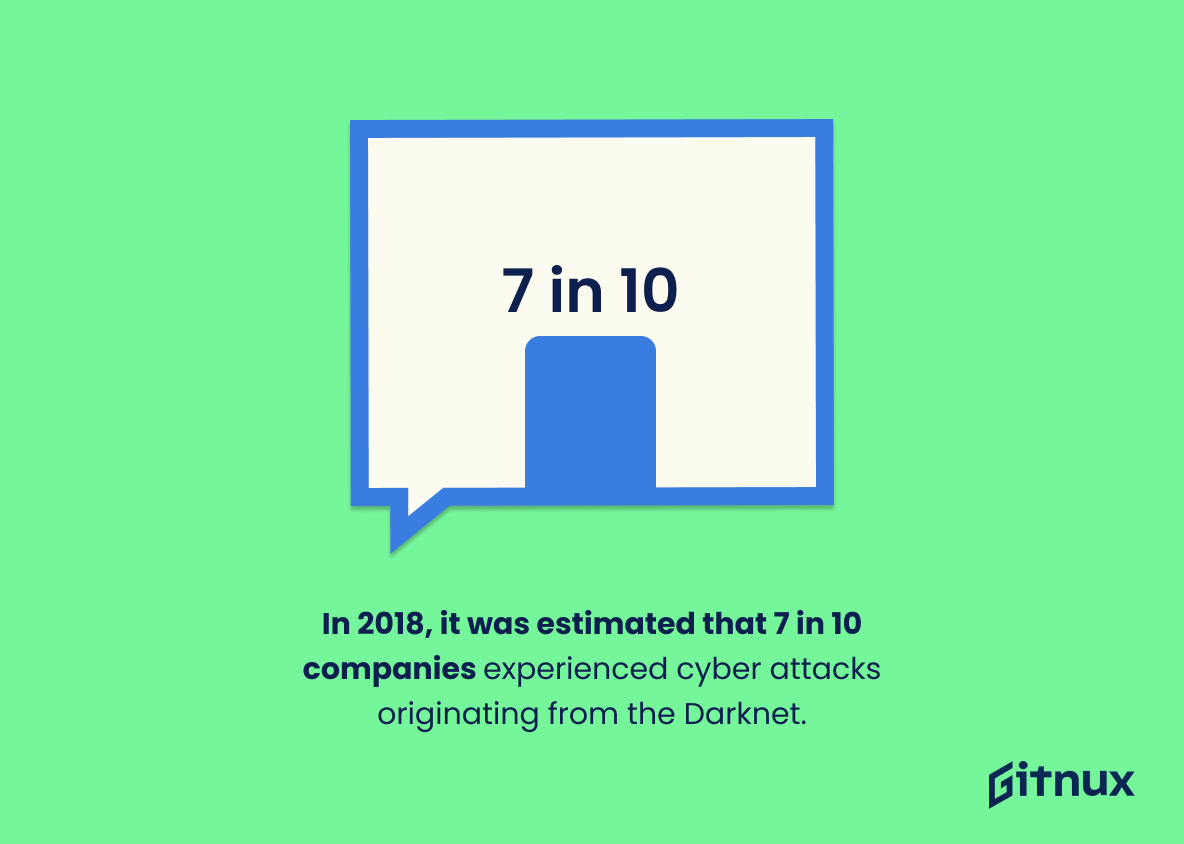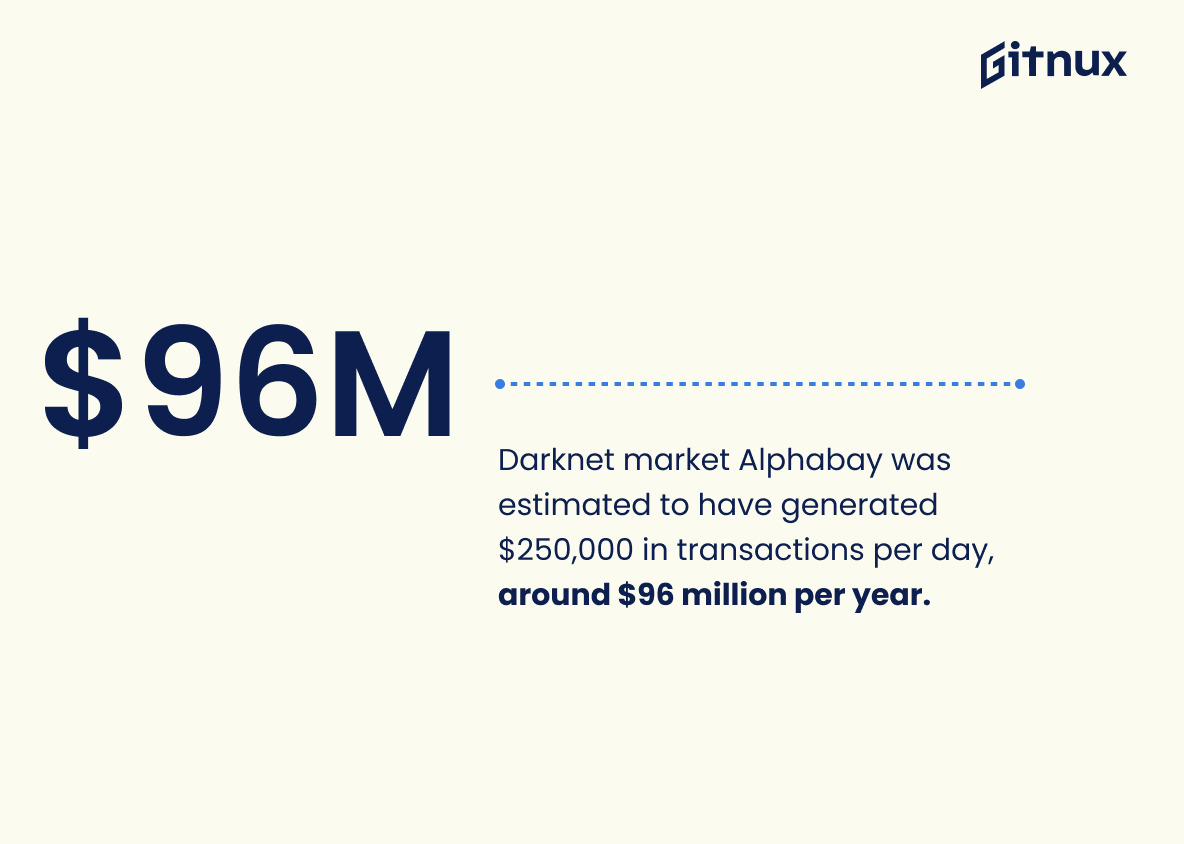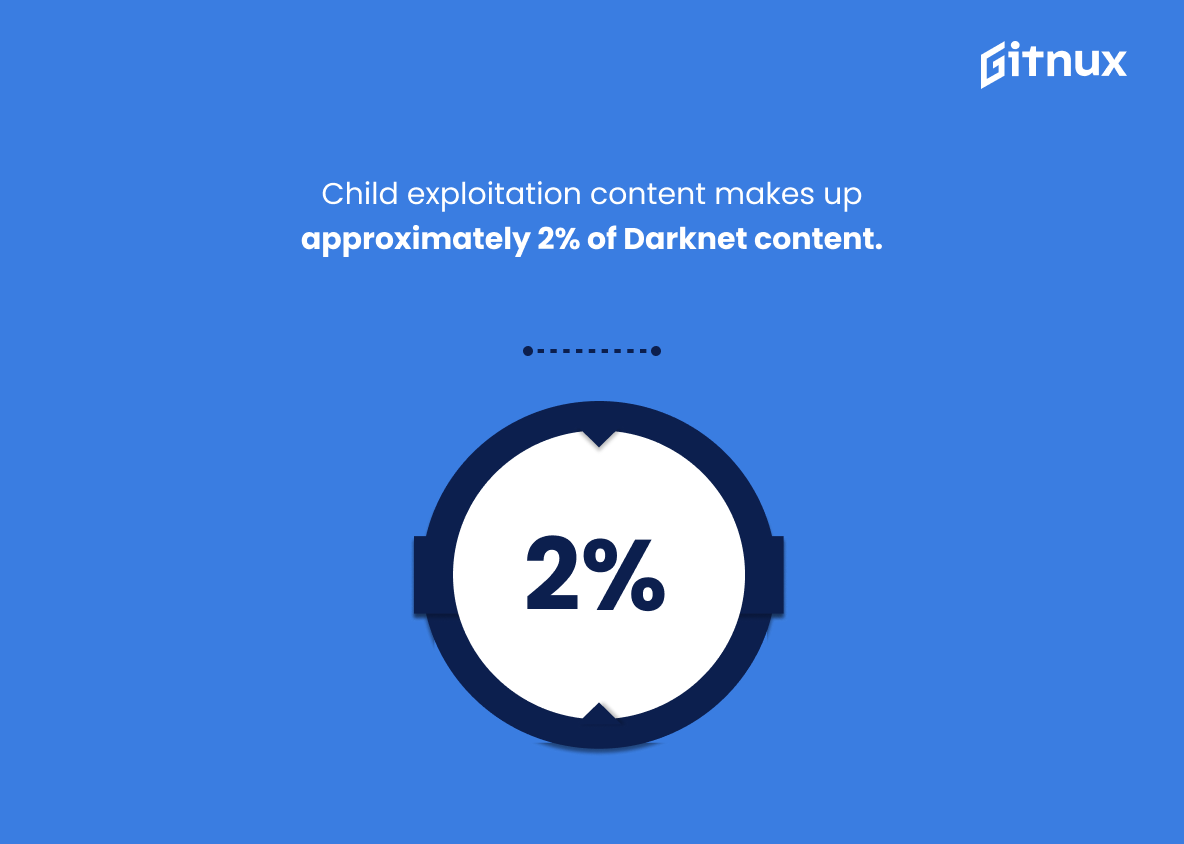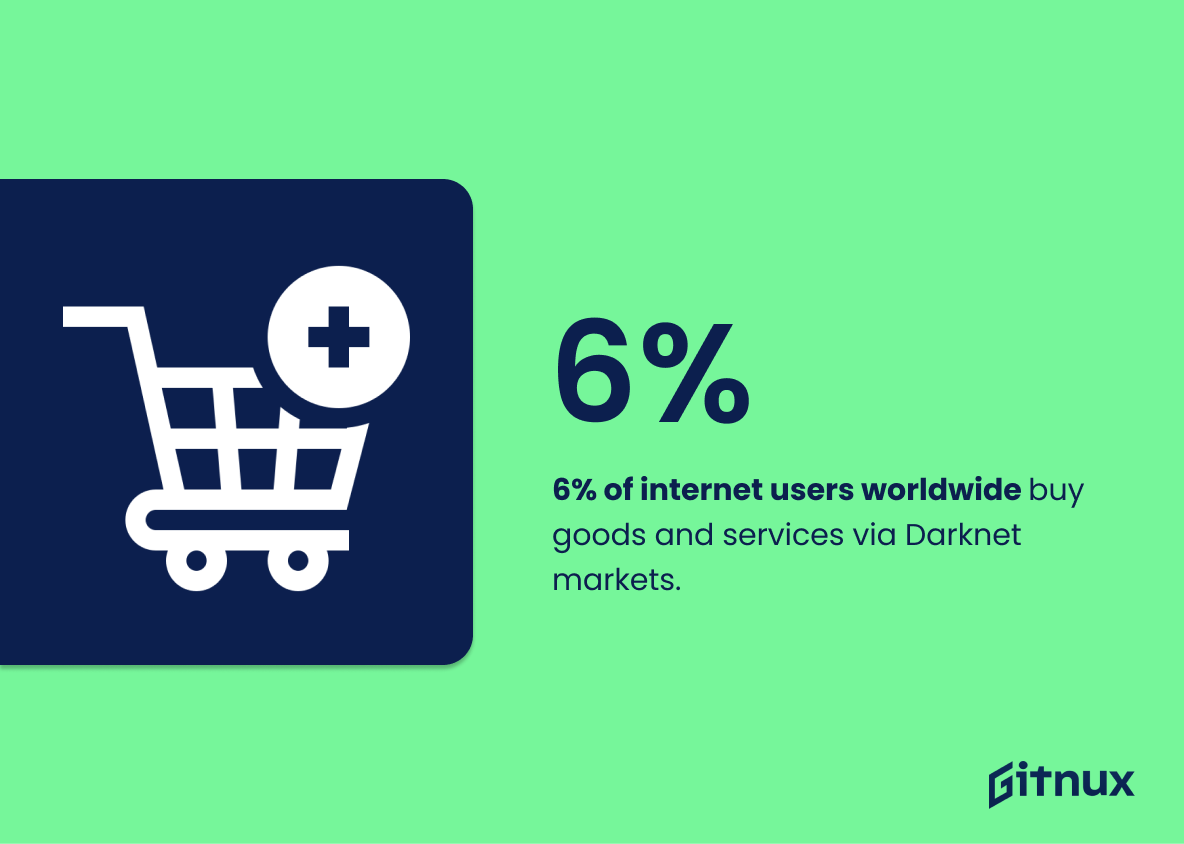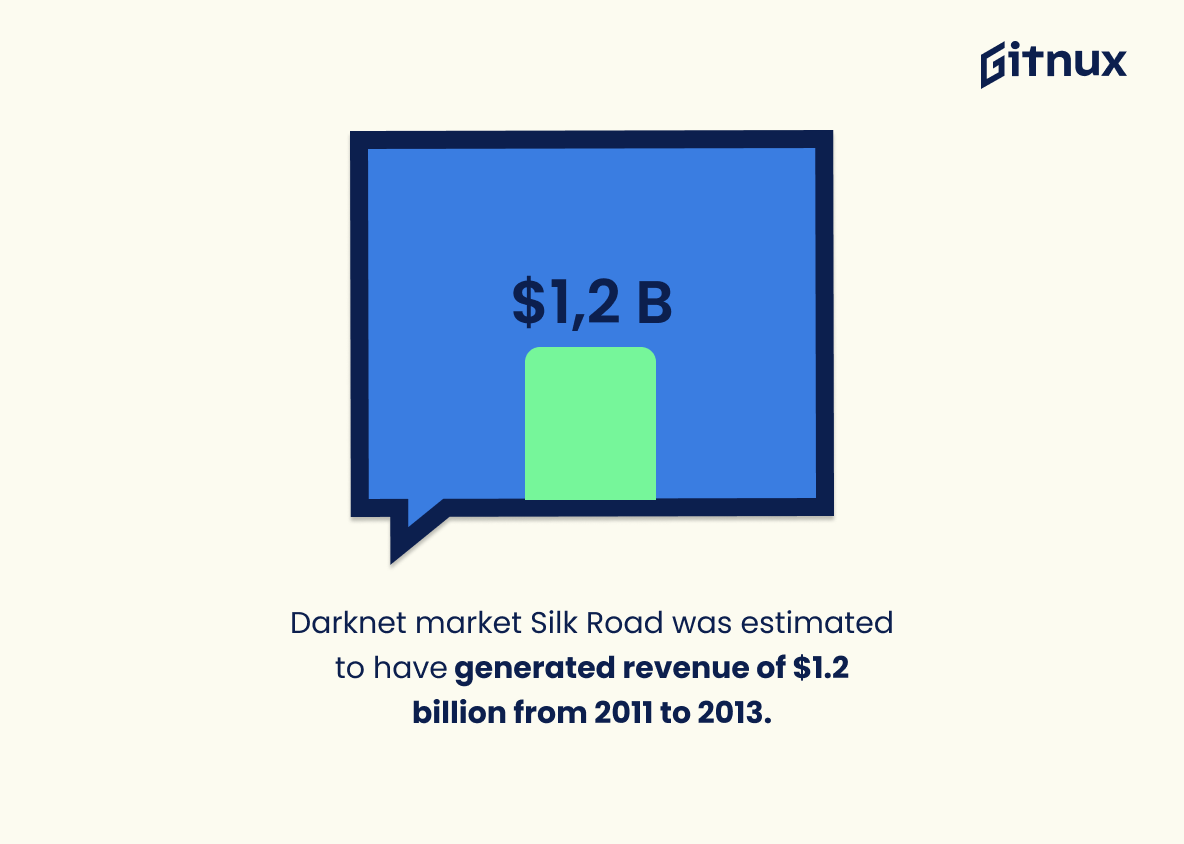The Darknet is a mysterious and often misunderstood corner of the internet. It’s estimated that there are over 30,000 websites within this hidden network, with nearly 60% belonging to illicit marketplaces. In 2020 alone, it was reported that sales from these markets exceeded $1.7 billion USD – an astonishing figure considering its illegal nature. But what else can be found on the Darknet? How many people use it? And how does it affect us all in our daily lives?
In this blog post we will explore some fascinating statistics about the Darknet: Approximately 47% of global cyber-attacks originate from here; 57% of users access dark web sites for buying drugs; The average user visits at least three websites per day; Over 8% of ransomware attacks come from dark web markets; 67% of popular Tor services were related to illicit activity in 2015; 13 percent of bitcoins sent to crypto exchanges came from dark net markets last year and 2 million people used them during Q1 2019 – just to name a few. We’ll also look into more specific figures such as child exploitation content making up around 2%, 500k new URLs indexed every day and Silk Road generating revenue worth $1.2 billion between 2011-2013.
So join us as we dive deeper into understanding one aspect which makes up today’s digital world – The Dark Web.
This statistic is a powerful indicator of the sheer size and scope of the Darknet, demonstrating the vastness of the hidden online world. It serves as a reminder of the immense potential for anonymity and privacy that the Darknet provides, as well as the potential for criminal activity that it can facilitate. This statistic is an important piece of the puzzle when it comes to understanding the Darknet and its implications.
Estimated Darknet market sales in 2020 exceeded $1.7 billion USD.
This statistic is a stark reminder of the sheer size and scope of the Darknet market. It is a testament to the immense power of the underground economy, and a sign of the immense potential for growth in the years to come. It is a reminder that the Darknet is a force to be reckoned with, and that its influence is only growing.
Darknet Statistics Overview
About 47% of global cyber-attacks originate from the darknet.
This statistic is a stark reminder of the prevalence of cyber-attacks originating from the darknet. It serves as a warning to those who may be unaware of the potential risks associated with the darknet, and highlights the need for increased vigilance when engaging with this online space.
The average Darknet user visits at least three websites per day.
This statistic is indicative of the level of activity on the Darknet, demonstrating that users are actively engaging with the platform on a daily basis. It also suggests that the Darknet is a popular destination for users, as they are visiting multiple websites each day. This information is important to consider when discussing Darknet Statistics, as it provides insight into the level of engagement and usage of the platform.
As of 2015, 67% of the most popular Tor services were related to illicit activity.
This statistic is a stark reminder of the prevalence of illicit activity on the Darknet. It highlights the fact that the majority of the most popular Tor services are being used for activities that are illegal or morally questionable. This statistic serves as a warning to those who may be considering using the Darknet for nefarious purposes, as well as a reminder to law enforcement and other authorities that the Darknet is a hotbed of criminal activity.
In 2020, 13% of all bitcoins sent to crypto exchanges came from Darknet markets.
This statistic serves as a stark reminder of the prevalence of Darknet markets in the cryptocurrency world. It highlights the fact that a significant portion of the bitcoins sent to crypto exchanges are sourced from these illicit networks, indicating that Darknet markets are still a major player in the cryptocurrency space. This statistic is a powerful reminder of the need for increased vigilance and regulation in the cryptocurrency industry.
Around 2.2 million people used Darknet markets in the first quarter of 2019.
This statistic is a telling indication of the prevalence of Darknet markets in the modern world. It shows that a significant portion of the population is engaging in activities on the Darknet, and that the use of these markets is growing. This statistic is a powerful reminder that the Darknet is an important part of the digital landscape, and that it is important to understand the implications of its use.
2% of all internet users in the USA use the Darknet.
This statistic is a telling indication of the prevalence of Darknet usage in the United States. It demonstrates that even a small percentage of internet users are engaging in activities on the Darknet, which could have serious implications for the security of the nation’s online infrastructure. As such, this statistic is an important piece of information to consider when discussing the current state of Darknet usage.
Out of 5.5 million messages analyzed, about 15% contained real-world threats.
This statistic is a stark reminder of the prevalence of real-world threats on the Darknet. It highlights the need for vigilance and security measures to protect against malicious actors lurking in the shadows of the internet. It also serves as a warning to those who may be tempted to explore the Darknet, as the potential risks are very real.
In 2018, it was estimated that 7 in 10 companies experienced cyber attacks originating from the Darknet.
This statistic serves as a stark reminder of the prevalence of cyber attacks originating from the Darknet. It highlights the need for companies to be aware of the potential risks posed by the Darknet and to take steps to protect themselves from such attacks. It also serves as a warning to companies that they must remain vigilant and take the necessary precautions to protect their data and systems from malicious actors.
Darknet market Alphabay was estimated to have generated $250,000 in transactions per day, around $96 million per year.
This statistic is a powerful indicator of the success of Darknet market Alphabay, demonstrating its ability to generate a significant amount of revenue on a daily basis. It also serves as a reminder of the sheer size and scope of the Darknet economy, with an estimated $96 million in transactions occurring annually. This statistic is a testament to the power of the Darknet and its ability to facilitate a wide range of activities, from illicit to legitimate.
About 500,000 new dark web URLs are indexed every day.
This statistic is a stark reminder of the sheer volume of activity taking place on the dark web every day. It highlights the sheer scale of the dark web and the need for vigilance in monitoring and understanding the activity taking place on it. It also serves as a reminder of the importance of staying up to date with the latest darknet statistics in order to stay ahead of the curve and protect against potential threats.
Child exploitation content makes up approximately 2% of Darknet content.
This statistic is a stark reminder of the prevalence of child exploitation content on the Darknet. It serves as a reminder that the Darknet is not only a platform for illicit activities, but also a platform for the exploitation of vulnerable individuals. This statistic is a call to action to take steps to protect children from exploitation on the Darknet and to ensure that the platform is not used as a tool for exploitation.
6% of internet users worldwide buy goods and services via Darknet markets.
This statistic is a telling indication of the prevalence of Darknet markets in the global online marketplace. It demonstrates that a significant portion of internet users are engaging in the purchase of goods and services through these anonymous networks, highlighting the importance of understanding the implications of Darknet activity.
Darknet market Silk Road was estimated to have generated revenue of $1.2 billion from 2011 to 2013.
This statistic is a testament to the immense success of Silk Road, demonstrating the sheer scale of its operations and the amount of money it was able to generate in a relatively short period of time. It is a powerful reminder of the potential of the darknet and its ability to facilitate large-scale criminal activity. This statistic is an important part of understanding the scope of the darknet and its impact on society.
Conclusion
The Darknet is a vast and complex network of websites, services, and activities that are often associated with illicit activity. Statistics show that there are approximately 30,000 websites within the Darknet, nearly 60% of which belong to illicit marketplaces. In 2020 alone it was estimated that these markets generated over $1.7 billion USD in sales revenue. Additionally, 47% of global cyber-attacks originate from the dark web while 57% of its content is related to drug purchases – an average user visits at least three sites per day for this purpose. Furthermore 8% of ransomware attacks come from dark web markets as well as 13% all bitcoins sent to crypto exchanges in 2020 originating from them too; 2 million people used such markets during Q1 2019 spending around $800 million annually between 2013-2015 on drugs alone according to one estimate; 67 percent most popular Tor services were related Silk Road generating about 1$2 billion 2011-2013; 500k new URLs indexed daily 6 % internet users buy goods/services via DNM’s & finally child exploitation content makes up only 2%. All these statistics point towards how pervasive yet dangerous the Darkweb can be if not monitored properly by authorities or individuals alike who should take necessary precautions when accessing it due its potential risks involved
References
0. – https://www.www.statista.com
1. – https://www.www.zdnet.com
2. – https://www.www.chainalysis.com
3. – https://www.cryptonomist.ch
4. – https://www.securitybrief.com.au
5. – https://www.inis.iaea.org
6. – https://www.sec.cs.ucl.ac.uk
7. – https://www.securityboulevard.com
8. – https://www.www.rsa.com
9. – https://www.www.juniperresearch.com
10. – https://www.www.fbi.gov
11. – https://www.www.weforum.org
12. – https://www.www.darkowl.com
13. – https://www.www.lexisnexis.co.uk
14. – https://www.thenextweb.com
ZipDo, cited June 2023: Darknet Statistics
